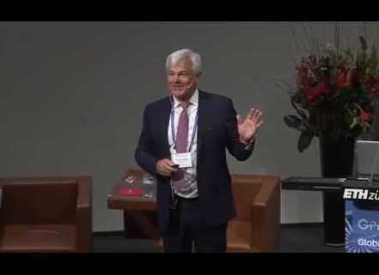These posts keep clients and colleagues up to date...and they also serve as great marketing tools. For visual artists, there's an additional benefit: people doing Google image searches for (cartoons, photos, art) click their way to the images in these blog posts, and some become new clients. I'm not enough a marketer to post for that reason alone, but I've read about it, and have seen that it works.
But I'll tell you, doing "What I've been up to lately" posts can be a snooze fest.
I feel similar sleepiness doing the social media marketing that nearly all businesses use now. (It also feels a little too self-involved at times.) But as one of my longtime clients (social media marketing pioneer, Hubspot) proclaims, "inbound marketing" is essential today.
Due to to my disenchantment with that kind of blogging, this journal has gone from weekly, to biweekly, to monthly, to quarterly, to biannually...and it's now creeping up on annually. That is fine, because I have more free time, and my drawing board has been steadily busy with clients without it.
But rather than to announce the death of this blog. ..or to make another post filled with (in my estimation) boring Whitman's sampler boxes of 15-20 recent client projects, I've decided to do something else.
After surfacing here the other day, (my first post in 9 months) I realized that some of the more popular posts here, (based on view counters) involved sharing the creative process.
No, I don't think there's a large group of people out there clamoring with wonderment about this stuff, ("Tell us, Mark...how does the fun in your cartoons get unleashed?")
But based on views and comments, there appears to be curiosity. So for those folks, here we go:
After surfacing here the other day, (my first post in 9 months) I realized that some of the more popular posts here, (based on view counters) involved sharing the creative process.
No, I don't think there's a large group of people out there clamoring with wonderment about this stuff, ("Tell us, Mark...how does the fun in your cartoons get unleashed?")
But based on views and comments, there appears to be curiosity. So for those folks, here we go:
----------------
This project was on my drawing board a few weeks ago. It's unlike most of the work I post here, as it is a personal commission or gift...something I typically do about once each month.
What makes it different than most of my client work, is that it is not published or featured online. It is only seen by that individual and whomever happens to see it hanging in that person's office or study (or garage?) wall. A relatively small audience.
What makes it different than most of my client work, is that it is not published or featured online. It is only seen by that individual and whomever happens to see it hanging in that person's office or study (or garage?) wall. A relatively small audience.
The client was global utility sector leader, Capgemini. I was surprised to learn that the Paris-based company has over 300,000 employees, but I'm embarrassed to admit that until they contacted me, I had never heard of them. (Unless you live in France or Canada, I'm betting you haven't either.)
They celebrated the retirement of one of their executives recently, and they wanted to create a gift to present to him at a party - a custom drawn humorous illustration depicting key milestones during his career. One of their Vice Presidents contacted me and, after a brief interview with him - an exceedingly nice guy - they hired me to do it.
Step 1: After discussing what they had in mind, and learning about the retiring executive's career, I requested several reference photos to help in creating a good likeness.
When drawing someone I have never met or whom is not a famous public figure, it is crucial to see front and profile photos with a range of emotions.
When drawing someone I have never met or whom is not a famous public figure, it is crucial to see front and profile photos with a range of emotions.



Step 2: I worked on the concept for the layout with another executive of Capgemini...someone who had worked with the gentleman to be honored. I was given a list of his achievements and set about illustrating them in a lighthearted and humorous manner.
Step 3: The concept and layout. I discussed two theme ideas with Capgemini: A series of small comic panels depicting milestones of the gentleman's career. I thought this sounded workable, but not really visually interesting, especially for something to be presented at a large group gathering. It needed more visual punch. So, I suggested a caricature drawing/painting of this gentleman surrounded by smaller vignettes. They liked that idea.
Step 4: The sketch.

Step 5: After discussing the sketch, some minor revisions were made, and a few more scenes were added.
Step 6: I formatted the artwork at 11 x 17, which is a nice standard size for printing - and for easy framing. Color was added in the form of digital watercolor washes. The art was drawn/painted on a Wacom Cintiq drawing screen. (photos below)


(Click to enlarge).
I still occasionally print and ship artwork, but with tight deadlines, is it more expedient and more efficient to email these to clients.
A photo taken at the celebration in Toronto: The gentleman with his executive assistant, and another Capgemini Vice President (with whom I worked on the piece).
Commissioned Illustration #2
I thought I'd share another similar gift commission, to show a slightly different process. (This was created two weeks ago, for a financial industry client in New York whom I first worked with over ten years ago.)
This piece involved depicting the director of another NY financial advising firm who easing his way into retirement. The client's idea was to create a two-paneled illustration...also showing the subject's long time assistant, who will assuming his position. This became a bit of a fun challenge.
I was asked to illustrate the first subject playing guitar while seated on his motorcycle at his desk. (i.e. not really working very hard anymore.)
Meanwhile, on the other side illustration is the new director of the firm...and she was to be shown as clearly very busy after taking the reins.
Step 1: the sketch was a layout of that theme, along with caricatures based upon a photo of each person.

As I mentioned above, having more than one or two photos is very helpful. And as it turns out, in this case, I did not 'capture' the woman's likeness very well. I wondered about that, as I was told that we only had one photo use, and it was several years old.
Step 2: I tried to revise the drawing, (aging her slightly) based upon comments, but it really wasn't close enough.
This piece involved depicting the director of another NY financial advising firm who easing his way into retirement. The client's idea was to create a two-paneled illustration...also showing the subject's long time assistant, who will assuming his position. This became a bit of a fun challenge.
I was asked to illustrate the first subject playing guitar while seated on his motorcycle at his desk. (i.e. not really working very hard anymore.)
Meanwhile, on the other side illustration is the new director of the firm...and she was to be shown as clearly very busy after taking the reins.
Step 1: the sketch was a layout of that theme, along with caricatures based upon a photo of each person.

As I mentioned above, having more than one or two photos is very helpful. And as it turns out, in this case, I did not 'capture' the woman's likeness very well. I wondered about that, as I was told that we only had one photo use, and it was several years old.
Step 2: I tried to revise the drawing, (aging her slightly) based upon comments, but it really wasn't close enough.
Step 3: A revised sketch below:
Since I had already gotten good likeness of Kevin, the man on the left earlier,
I took the liberty of adding color to that part of the cartoon.

Step 4: The client liked the layout and the new drawing, so I applied a
watercolor wash over everything else in the illustration.

clicken to embiggen
Read more
The client approved the finished piece, so I emailed the digital artwork to him. He had two copies printed on a large format printer at Staples, and then matted and framed them as separate gifts for each of his depicted colleagues.
He emailed a few days later, related that they were well received and being hung on each of their office walls.
------------------
Step1: The sketch of the main scene: The spokesman character created to introduce a new technology, and a typical corporation level user of the new technology.
Lastly, I'll share the process used for an animated commercial created for Intel Corporation.
This is artwork that I was commissioned to create for a third installment of a series of videos.
I worked in concert with a media firm in New York who was also hired by Intel Corporation. It was my responsibility to design and draw the backgrounds and characters.
There were dozens of scenes, but I chose one to give you an idea of how everything went from sketches to finished art.
Step 2: Watercolor and shading added to the approved art.
Step 3: A zoom in look at the scene with employees of the corporation.
Step 4: Color is added to the scene and all characters. There are several angles and views of this scene...all of which are completed in in similar fashion, in succession.
After the artwork was approved by Intel, I worked with animation team also NYC, giving them poses of each character to to work with for the animation.
--------------------
Well, that took some time, but it was a nice change of pace, and also fun to write something rather than simply post images. I hope it didn't send you to REM slumber.
One of the things currently on the board is a commissioned illustration for a prominent Internet security company, as a gift to their CIO. It's just an office scene and a few executives standing around talking with each other about IT, so I'm looking for a way to add some interest and humor. (Other than say drawing them all in their underwear.)
Cheers!
Cheers!










That's a unique gift. Are your sketches in pencil or digital?
ReplyDeleteHi Jennifer - That's a good question. Like most illustrators, I used to draw everything by hand on paper/bristol. But as I switched to using a Wacom tablet 15 years ago, I continued to draw sketches in pencil, and would then scan them, doing the ink and color in Photoshop.
ReplyDeleteLater, I made the jump to a Wacom Cintiq drawing monitor, (the same thing used by Pixar and Disney animators, which allows one to draw right on the glass). With that, I now often do sketches digitally as well. If the drawing is very involved, with perspective, or say lots of character movement. I will start with skills formed back in the Paleozoic era, with pencil on paper.
Thanks for the question!